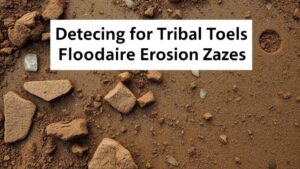Detecting Along Historic Pilgrim Trails for Religious and Currency Coins
Detecting Along Historic Pilgrim Trails for Religious and Currency Coins
The act of detecting coins, particularly along historic pilgrim trails, combines the zeal for archaeology with the pursuit of tangible artifacts that tell the story of human faith and commerce. Pilgrim trails, often traveled by individuals seeking spiritual enlightenment, have historically seen the loss and exchange of both religious tokens and currency coins. This article explores the methodologies, technologies, and historical contexts relevant to detecting these valuable items, shedding light on their significance in both historical and numismatic studies.
Understanding Historic Pilgrim Trails
Historic pilgrim trails, such as the Camino de Santiago in Spain and the Canterbury Trail in England, have been pathways of spiritual significance for centuries. Pilgrims journeyed these routes, leaving behind traces of their passage, including coins–they used currencies for trades, offerings, and donations at sacred places. For example, the Camino de Santiago alone hosts thousands of pilgrims annually, increasing the likelihood of discovering artifacts from diverse eras.
- The Camino de Santiago
- The Canterbury Trail
- The Kumano Kodo in Japan
Each of these trails represents not only a journey of faith but also a confluence of cultural and economic activities, making them rich sites for detection.
Technological Tools for Detection
Modern metal detecting employs advanced technologies that facilitate the identification of coins and artifacts buried along historic trails. Employing devices such as VLF (Very Low Frequency) detectors and pulse induction detectors can significantly enhance the success rate of finding particular types of coins.
- VLF Detectors: These detectors are adept at distinguishing between different metal types, making them suitable for locating both religious tokens (often made of silver or bronze) and currency coins (which may include various alloys).
- Pulse Induction Detectors: Suitable for detecting coins at greater depths, this technology works well in mineralized soil common along historical trade routes.
For example, in 2022, a team of archaeologists employed VLF technology along the Camino de Santiago and discovered a cache of silver coins from the late medieval period, affirming the trails historical significance as a commercial route.
Potential Finds: Religious Tokens and Currency Coins
The coins detectable along these trails can be classified into two main categories: religious tokens and currency coins. Each category carries historical context and value, offering insights into the spiritual and economic life of pilgrims.
Religious Tokens
Religious tokens are items often made for sacramental purposes or in honor of saints. These tokens typically feature identifiable symbols and inscriptions. For example, pilgrim badges found along the routes to Santiago often depict St. James and symbolize the pilgrimage experience.
- St. James Badges
- Annular Brooches
In a notable case, a rare pilgrim badge was excavated near Canterbury, featuring the image of Thomas Becket, which further highlights the spiritual significance of these artifacts.
Currency Coins
Currency coins found along the trails can provide critical economic context, helping researchers understand the trade dynamics of the time. Examples include the Spanish Real or English Groat, used widely during pilgrimage periods.
For example, discoveries along the Camino have revealed various denominations from the Spanish Empire, indicating the flow of wealth and commerce stimulated by the influx of pilgrims for religious observances.
Key Considerations in Coin Detection
While metal detecting along historic pilgrim trails presents exciting opportunities, several considerations must be addressed:
- Legal Restrictions: Many historic sites are protected by heritage laws, requiring permission or licenses to search.
- Ethical Guidelines: Practitioners must abide by ethical guidelines that respect the site and its historical integrity, ensuring that artifacts are recorded and preserved.
Engaging with local historical societies can offer valuable insights and support, ensuring that any findings contribute to the broader understanding of the site rather than detract from it.
Conclusion: The Importance of Historical Context
Detecting coins along historic pilgrim trails is not merely a treasure hunt; it is an exploration of the intersections between faith, trade, and human experience throughout history. By utilizing advanced technologies and respecting legal and ethical frameworks, enthusiasts and researchers alike can uncover the rich tapestry of stories woven into these ancient pathways.
In summary, from using specific detection tools to understanding the types of artifacts likely to be found, the field of numismatics related to pilgrim trails offers a profound glimpse into our spiritual and economic pasts. Those interested need to be proactive in learning, respecting the trails, and engaging with local communities to maximize both their discoveries and their contributions to historical knowledge.


